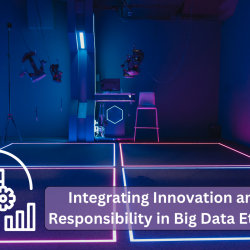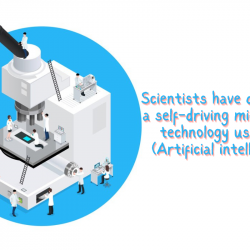Unlocking the possibilities: Robotics in the age of Globalization

Introduction to Robotics in the age of Globalization
Today, let’s dive into the topic of “Unlocking the possibilities: Robotics in the age of Globalization ” and discover how advancements in technology have made this possible. In this fast paced era of globalization, where information and resources are readily available at our fingertips, robotics has emerged as a key player in shaping the future.
With the rapid pace of technological advancements, robotics is no longer limited to just manufacturing or assembly line tasks. It has expanded its reach into diverse industries such as healthcare, agriculture, transportation, and even entertainment.
One of the main driving forces behind this expansion is globalization. The interconnectedness of economies and societies across borders has facilitated the spread of knowledge and resources. In today’s world, one country’s innovation can quickly become another country’s inspiration.
Moreover, with global trade becoming more accessible and international collaborations increasing, companies have access to a larger pool of skilled workers from around the world. This not only brings in fresh ideas but also offers diverse perspectives on problem solving, leading to more innovative solutions.
In addition to that, globalization has also opened up markets for companies to export their robotic products and services worldwide. This creates opportunities for businesses to cater to different needs and demands from different regions while also expanding their market reach.
Understanding Robotics in the Age of Globalization
To begin with, let’s first define what exactly do we mean by robotics? In simple terms, robotics is a branch of technology that deals with the design, construction, operation and use of robots. These robots are essentially machines that can carry out tasks autonomously, without any human intervention.
Now that we have a basic understanding of what robotics is all about, let’s take a closer look at how globalization is affecting its development. With the rise of global trade and interconnectivity between nations, there has been an increased demand for cost effective and efficient production processes. This has led to the adoption of automation technologies like robotics in various industries.
The development of robotics technology has also been greatly influenced by globalization. With access to resources from all over the world, researchers and engineers have been able to collaborate on projects and share their knowledge for developing better robots.
Benefits and Applications of Robotics in a Globalized Society
One of the key benefits of robotics in a globalized society is its ability to enhance efficiency and productivity. With the advancements in automation, robots can perform tasks at a much faster pace and with higher accuracy compared to humans. This not only saves time but also reduces the margin for error, resulting in increased productivity. For instance, in manufacturing industries, robots are being used for assembly line processes which were previously done manually.
Moreover, robotics is unlocking new possibilities by empowering human potential through automation. By taking over tedious and repetitive tasks, robots are freeing up human resources to focus on more creative and insightful work. This allows individuals to utilize their skills and knowledge to their fullest potential, leading to job satisfaction and personal growth.
Furthermore, one of the most significant impacts of robotics can be observed in various industries such as manufacturing, healthcare, and agriculture. In manufacturing plants, robots are replacing human labor for tasks such as welding, painting, or packaging. This not only increases efficiency but also improves workplace safety by reducing exposure to hazardous materials.
Challenges and Considerations for Implementing Robotics globally
One critical factor to consider when implementing robotics globally is its economic implications. The costs associated with adopting robotics technology can vary significantly depending on a country’s economic status. While advanced economies may have the resources to invest in expensive robots and automation systems, developing nations may struggle with affordability.
Moreover, investing in robotics also brings about changes in job markets. Automation can lead to job losses for low skilled workers who are easily replaceable by robots. This shift could result in unemployment and income inequality, especially in developing countries where labor costs are relatively low compared to advanced economies. On the other hand, it could also create new job opportunities for individuals with specialized skills in operating and maintaining these robots.
Apart from economic implications, sociocultural factors also play a crucial role in implementing robotics globally. Different cultures have varying attitudes towards automation and artificial intelligence (AI). In some societies, people may embrace new technologies with open arms, while others may view it as a threat to their jobs or way of life.
Another aspect that must be carefully evaluated is ethical concerns surrounding robotics. With AI becoming more integrated into our daily lives through devices like virtual assistants and autonomous vehicles, questions arise about data privacy and security.
Impact on Labor Market & Job Growth Opportunities
The most common misconception about automation is that it will lead to widespread job loss. Many people fear that robots and machines will replace human workers, leaving them unemployed. However, this fear is largely unfounded. According to a report by McKinsey Global Institute, while automation may eliminate some jobs, it will also create new ones.
It’s important to note that automation doesn’t necessarily mean replacing human workers with robots. Instead, it involves using technology to streamline processes and increase efficiency. For example, instead of manually assembling parts in a factory, robots can do it faster and with greater precision. This frees up human workers to focus on more complex tasks that require critical thinking and problem solving skills.
In addition to improving efficiency, automation also opens up new job opportunities in industries such as robotics. As companies adopt more advanced technologies, there is an increased demand for skilled workers who can design, program and maintain these systems. This has created a whole new sector for careers in fields like artificial intelligence (AI) and machine learning.
Limitations and Barriers to Worldwide Adoption
One of the main challenges is the cost factor and accessibility issues. As with any new technology, there is a significant investment required for research, development, and production. This makes robotics expensive and inaccessible for many individuals and organizations around the world. Moreover, developing countries may face additional hurdles due to limited resources and infrastructure.
Another crucial aspect for robotics to thrive is reliable internet connectivity. With advancements in artificial intelligence (AI) and machine learning, robots are becoming more intelligent and connected devices. They require constant communication with servers or cloud platforms to operate efficiently.
The political landscape and regulations in different regions also play a significant role in the adoption of robotics technology. In some countries, governments may impose strict regulations on importing or using robots due to concerns about job displacement or safety issues.
Cultural barriers can also affect the adoption of robotics technology globally. Each country has its unique culture, language, beliefs, and norms that shape their views towards technology. For instance, Japan has embraced robots as part of their culture while other countries may view them as a threat to human jobs or privacy.






Ingen kommentarer endnu